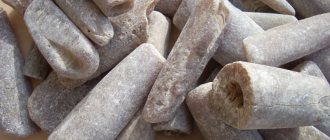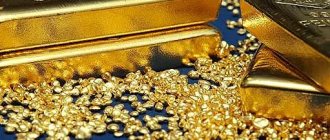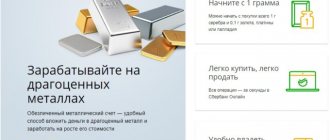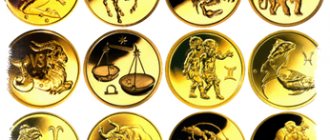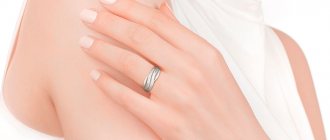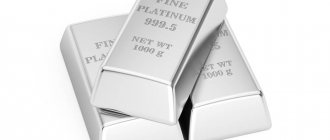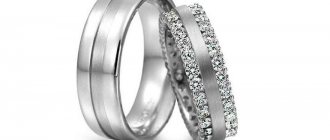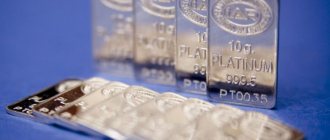Story
The inhabitants of Ancient Egypt were the first to become acquainted with metal: archaeologists unearthed jewelry that was nearly three thousand years old. A little later, the Indians of South America began to make platinum artifacts.
Platinum nugget, Conder deposit
Europe
The Spanish conquistadors who conquered America in the 16th century also found platinum veins. But they mistook the metal for silver, and even “defective”: it did not want to melt. The new metal was sold at half the price of silver bars.
And they came up with the appropriate name - platina in Spanish means “small silver, little silver” (from plata - silver).
Everything changed when Spanish jewelers managed to fuse “silver” with gold:
- The first counterfeits of gold appeared. It was not possible to discover this for a long time due to the density of platinum.
- When the deception was discovered, the import of platinum was banned by decree of the king, and all the “cash” was drowned in the sea.
- In 1751, the Swedish scientist Theophile Schaeffer, who examined the metal, discovered its preciousness.
- Since 1778, the new metal began to be used as a self-sufficient jewelry material.
- In 1870, the ruler of France, Louis XVI, considered platinum the only royal metal.
The Second World War “closed” platinum for civilian consumption: the military took everything.
Russia
In Russia, the history of platinum began in 1819, when fragments of the “new Siberian metal” were discovered in alluvial gold in the Urals.
In the 19th century, Russia provided 95% of the world's platinum production.
The local population used silver-steel grains instead of shot for hunting. The first domestically produced platinum products were a ring and a teaspoon. Their craftsmen presented them to Emperor Alexander I.
Coin 3 rubles, 1834
They didn’t know what to do with platinum. They minted a coin (3, 6, 12 rubles), but its cost exceeded the face value many times over. As a result, money was withdrawn from circulation, and the British bought coins as raw materials.
Today, almost everything that is mined in Russia remains in the country.
Jewelry world
The global platinum rush began at the end of the second millennium:
- 1930s – fashion for metal was introduced by style icon Marlene Dietrich. Soon the epidemic spread to America.
- Edward VII and Wallis Simpson became engaged with platinum rings from Cartier, then Elvis Presley and Priscilla Ann.
- It was finally elevated by the first-tier jewelry brand Tiffani.
It has been Japan's favorite metal since the 1960s - its white color symbolizing the core virtues of this community. Two-thirds of the world's jewelry is purchased by China.
Physico-chemical characteristics
It is the heaviest, most durable of the precious metals. Does not oxidize, does not darken, does not rust. Interacts poorly with other substances, even aggressive ones. Refractory, but plastic, viscous.
Platinum crystals
Only “royal vodka” can dissolve it, and not immediately.
| Properties of the atom | |
| Name, symbol, number | Platinum (Pt), 78 |
| Atomic mass (molar mass) | 195.084 a. e.m. (g/mol) |
| Electronic configuration | [Xe] 4f14 5d9 6s1 |
| Atomic radius | 139 pm |
| Chemical properties | |
| Covalent radius | 130 pm |
| Ion radius | (+4e) 65 (+2e) 80 pm |
| Electronegativity | 2.28 (Pauling scale) |
| Electrode potential | Pt←Pt2+ 1.20 V |
| Oxidation states | 4, 2, 0 |
| Ionization energy (first electron) | 868.1 (9.00) kJ/mol (eV) |
| Thermodynamic properties of a simple substance | |
| Density (at normal conditions) | 21.09-21.45 g/cm³ |
| Melting temperature | 2041.4 K (1768.3 °C, 3214.9 °F) |
| Boiling temperature | 4098 K (3825 °C, 6917 °F) |
| Ud. heat of fusion | 21.76 kJ/mol |
| Ud. heat of vaporization | ~470 kJ/mol |
| Molar heat capacity | 25.8 J/(K mol) |
| Molar volume | 9.10 cm³/mol |
| Crystal lattice of a simple substance | |
| Lattice structure | cubic face-centered |
| Lattice parameters | 3.920 Å |
| Debye temperature | 230.00 K |
| Other characteristics | |
| Thermal conductivity | (300 K) 71.6 W/(mK) |
| Thermal expansion | (25 °C) 8.8 |
| Young's modulus | 168 GPa |
| Shear modulus | 61 GPa |
| Volume control module | 230 GPa |
| Poisson's ratio | 0,38 |
| Mohs hardness | 3,5 |
| Vickers hardness | 549 MPa |
| Brinell hardness | 392 MPa |
| CAS number | 7440-06-4 |
Iridium, palladium, rhodium, ruthenium, and osmium have similar physical and chemical properties and a cubic structure. These metals are grouped into the platinum group.
Where and how is it mined?
According to the theory, the process of formation of platinum is the same as that of gold - from interstellar dust as a result of a cosmic explosion.
She found herself in the core of the planet, then rose to the surface by earthquakes:
- It is found in igneous igneous rocks.
- Platinum veins are found in river beds, next to other minerals.
- Platinum in nature is usually found together with platinum group metals, iron, copper, and nickel. Most often these are large nuggets; cube crystals are rare.
Today the world leader in the extraction and supply of raw materials is South Africa. Russia is in the top five.
The methods for extracting platinum raw materials are similar to gold - washing and extraction from other ores. Then treatment using the refining method (removal of impurities) - double exposure to “regia vodka”, calcination.
Dissolving platinum in hot aqua regia
Form of being in nature
Usually observed in the form of small grains or nuggets weighing up to 8 kg. The largest nugget found in the primary deposits of the Urals weighed 427.5 g. Nuggets found in placers reached a size of 10 × 18 cm and a weight of 8–9 kg. The largest platinum nuggets displayed at the exhibition of the Diamond Fund of Russia weigh 5918.4 and 7860.5 grams. The rare small crystals are mostly cubic in shape.
Individual grains of native platinum found in ores are often grouped into small piles, sometimes forming continuous masses - nuggets.
Application of platinum
Platinum raw materials are divided into three areas of application (%):
- industry, technology – 60;
- jewelry – 30;
- financial sector – 10.
Platinum fragments are on the highest awards of the USSR: the orders of Lenin, “Victory”, Suvorov and Ushakov (both 1st degree).
Platinum image of Lenin on the Order of Lenin
The properties of platinum have made it indispensable in practical applications.
Industrial complex
Noble metal helps make human life easier:
- From a third to a half of the metal volume is taken by the auto industry. Thanks to platinum catalysts, almost all emissions (exhaust gases) are neutralized.
- Oil distillation, production of silicone products, electrical and aircraft parts, and special types of glass.
- Dental and medical instruments, means for the treatment of cardiac diseases (platinum-iridium electrodes), oncological diseases.
- Artificial fertilizers for the agricultural complex.
Standards of measurement are made from platinum. In France it is a meter and a kilogram, in Russia it is a kilogram (a platinum-iridium cylinder with a height and a diameter of 39 mm; stored in St. Petersburg).
Jewelry
Platinum is expensive, but is in demand by jewelers and their clients due to its obvious advantages:
- All products are elegant, with a noble, discreet shine.
- Diamonds in such a setting look even more expensive and hold more securely.
- White color goes well with precious stones of all shades.
- Platinum jewelry wears out little and is therefore suitable for constant wear.
- Unlike gold, it is hypoallergenic. That is, it suits everyone.
The only “disadvantage” of platinum is the price. It is several times higher than gold . It’s all the more prestigious to buy at least a ring or stud earrings made of royal metal.
Financial sector
Platinum is used to make bank bars, collectible coins, and medals.
Platinum coin of 1835 with a face value of 12 rubles
You can also buy or sell “virtual” platinum on the exchange.
Platinum samples
Platinum is durable, but its alloys are used in jewelry. Therefore, metal is subject to a standard system - metric and carat.
Unlike other metals, platinum is not coated with anything, so the classification is carried out by type of sample.
The sample number shows how much pure metal the alloy or product contains.
For example, 1 kg of 850-grade alloy is 850 g of pure platinum and 150 g of impurities.
Slovakia and the Czech Republic have their own sampling system (indicated in the table as SC).
The 800th sample is present here (marked as 4).
Characteristics of the main platinum samples:
| Sample (metric/carat/SP) | Impurities (ligatures) | Scope of application |
| 850/20/3 | Iridium, tungsten, cobalt or copper. | There is little demand among jewelers; it is often used for cutlery and small plastic items. |
| 900/22/2 | Ruthenium, iridium | Jewelry |
| 950/23/1 | Palladium, ruthenium, iridium | Decorations, small plastic items, deluxe cutlery. |
| 999/24/0 | None | Bank bullion, in industry – special purpose tools |
Sample 999 has special features. The content of precious metal in the alloy is measured to hundredths of a percent - from 99.95 to 99.99%.
The platinum standard is “five nines”, 99.999% platinum.
How to determine authenticity
They offer silver or white gold under the guise of platinum.
You can determine the authenticity of a product at home:
- A product made of platinum is heavier than gold, especially silver of comparable parameters.
- Place the silver item and the sample next to it. Even high-grade silver gives off a grayish tint and “coldness.” The platinum composition has a pure warm white luster.
There are other differences between platinum and white gold:
- Platinum rings, earrings, even necklaces and bracelets are not large or massive - the metal is too expensive.
- At normal temperatures, it is not affected by hydrogen peroxide, iodine solution, or acetic acid. They will not leave marks on the surface.
- Under the flame of a candle, lighter, or household gas stove, it will heat up, but will not change in appearance. Gold may soften.
- You can hold the sample in your hands: the royal metal takes longer to heat up than gold, especially silver.
- A pawn shop worker or jeweler is guaranteed to be able to distinguish the original.
Platinum looks almost like white gold, so many are sure that they are the same thing. However, white gold is an alloy of metals, and platinum is an independent element.
How to spot a fake
Platinum's silvery luster is similar to silver. Let's figure out how to avoid scammers and distinguish real platinum jewelry from a fake.
The element does not react to alkalis and acids. There is a simple home test using a rotten egg, which contains hydrogen sulfide. By what color the product becomes, you can determine what is in front of you. Silver will turn black, platinum will not.
The old-fashioned method of biting will help determine how soft the metal is in front of you. Platinum alloys are very hard and there are no traces of deformation on them. Of course, not every buyer will risk their teeth. And sellers are not happy with this definition of authenticity.
A distinctive characteristic of platinum is low thermal conductivity. When heated, heat spreads more slowly than with other metals.
I advise you to pay attention to the mark. Images, numbers, and print outlines must be clear and without deformation. If you have doubts about the authenticity of a precious metal, you can contact a specialist - a jeweler or an appraiser at a pawnshop.
How to store and care
In order for platinum products to maintain their original premium condition, simple care is sufficient:
- Jewelry (especially rings and bracelets) is removed before household work (washing, cleaning, cooking).
- They are protected from moisture and household chemicals, especially aggressive ones.
- It should be stored in a separate, tightly closed box.
Tarnish or dirt can be removed by immersing the item in a warm soapy solution for a couple of hours. Then rinse with water and dry with a soft cloth.
If possible, purchase a cleaning product for platinum products.
If the jewelry contains diamonds or other stones, it should be sent for professional cleaning.
Caring for platinum jewelry
Jewelry care includes:
- cleaning by a professional (especially if the jewelry contains precious stones);
- checking for good fixation of stones in the product;
- unlike you, jewelry does not benefit from cosmetics and household chemicals;
- inspect the jewelry for cracks, scratches, or chips. If you find damage, run to the jeweler.
Store jewelry in separate cases, boxes, bags. This way, products made from different metals and stones (with different hardnesses) will not scratch one another.
Platinum image of Lenin on the Order of Lenin.
Wash earrings and rings with a neutral soap solution using a soft brush. Place the chains in a glass, fill with soapy water and swirl the contents.
Then rinse the product under running water and dry.
Why is platinum so expensive?
Platinum is a premium metal, a marker of luxury.
This is natural:
- It is found on Earth 30 times less often than gold.
- To obtain 100 g of pure platinum raw materials, it is necessary to process 30 tons of ore. Gold is four times less.
- Only Russia, South Africa, the USA, China, and Zimbabwe have industrial-scale platinum deposits.
- World reserves are estimated in tons (not thousands of tons like gold).
World exchange prices for platinum exceed gold and also fluctuate depending on global market conditions. For example, at the end of December 2021, 1 gram costs 2.4 thousand rubles.
Top countries by production
The leading countries in the world market are:
- Republic of South Africa.
- Russia.
- Zimbabwe.
- USA.
- Canada.
World platinum reserves
80% of platinum group metal deposits available for development are located in South Africa (Bushveld complex in the north of the country).
The second largest reserves are the GreatDyke field (Zimbabwe).
3rd and 4th place in the Russian Federation and North America (USA, Canada). Canadian platinum ores are concentrated in the provinces of Ontario and Manitoba. In the United States, the bulk of production occurs in two large mines in Montana.
Colombian placer deposits are saturated with platinum group metals. They are concentrated in the western Cordillera, in the river valleys of Atrato and San Juan.
